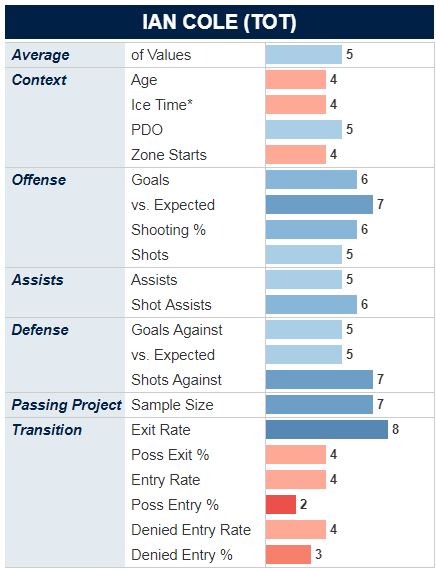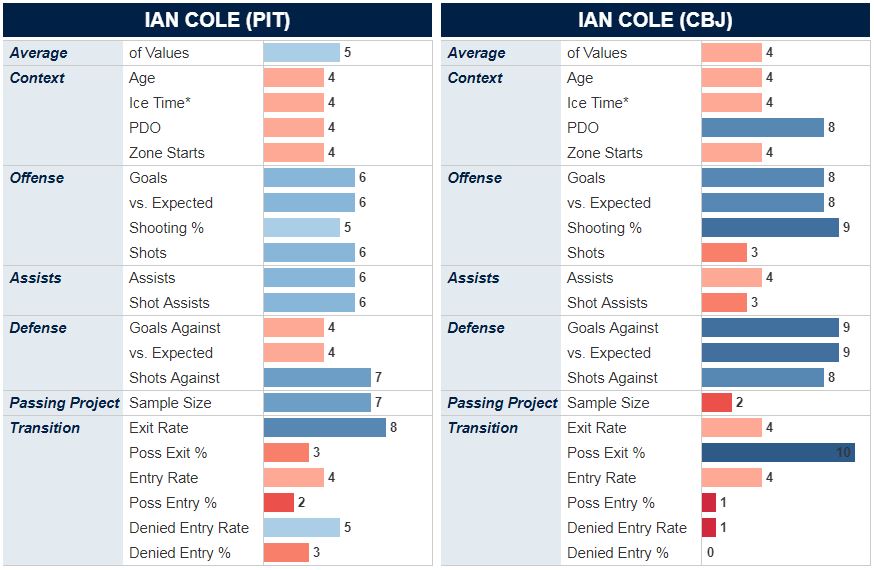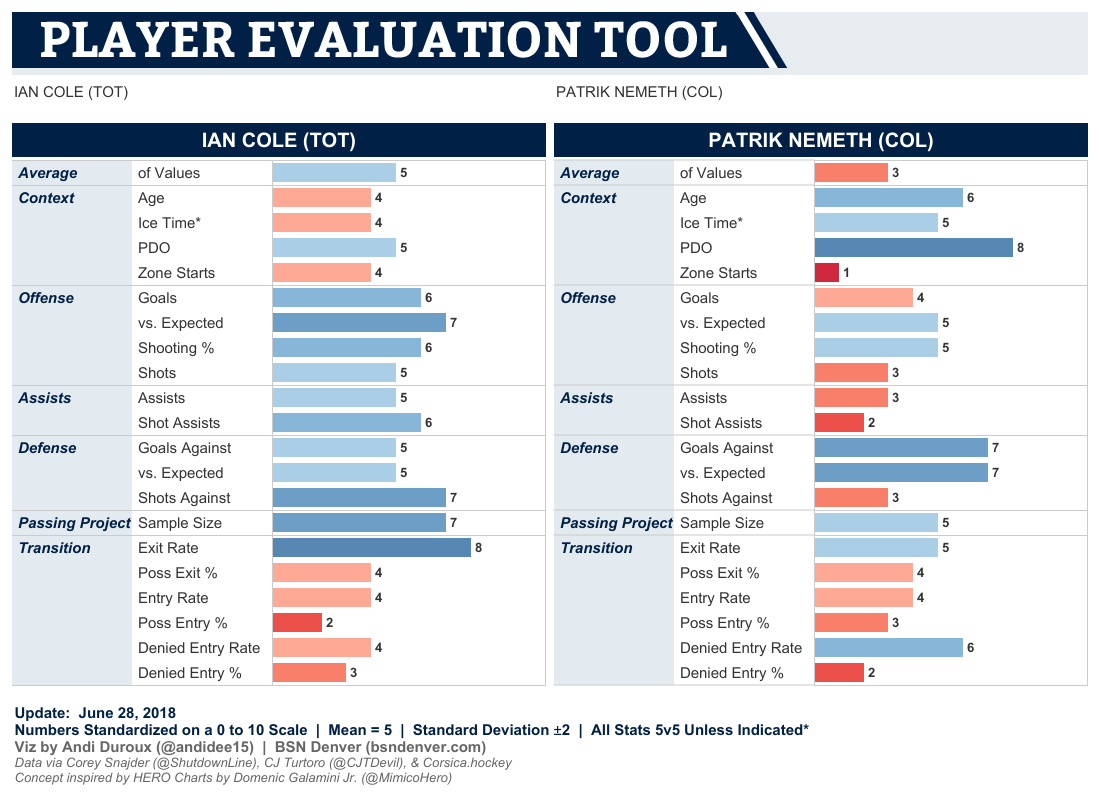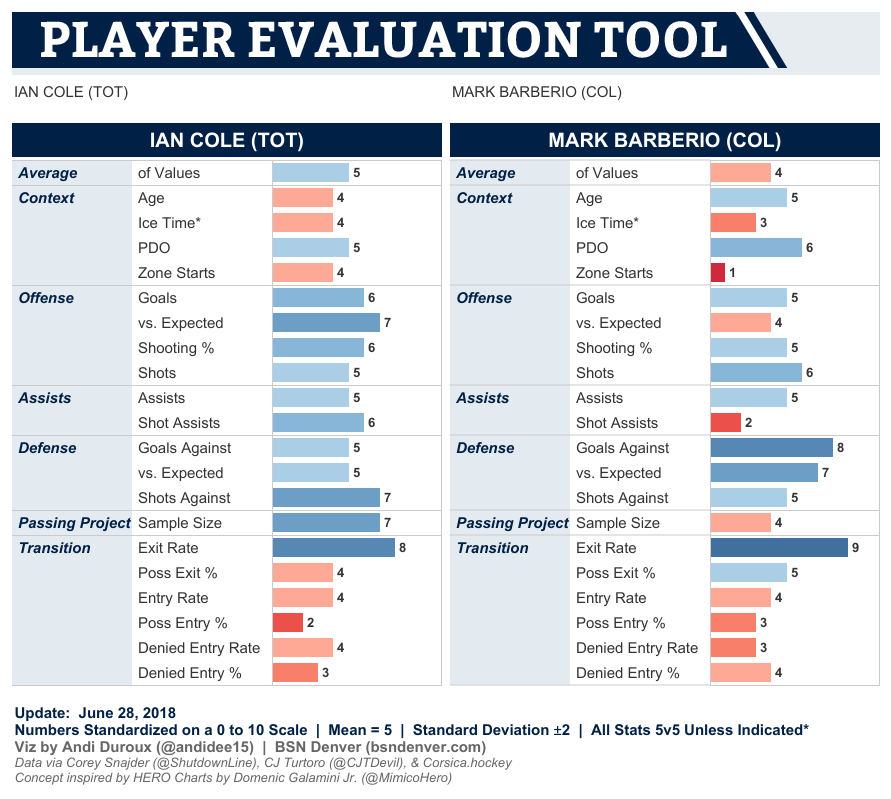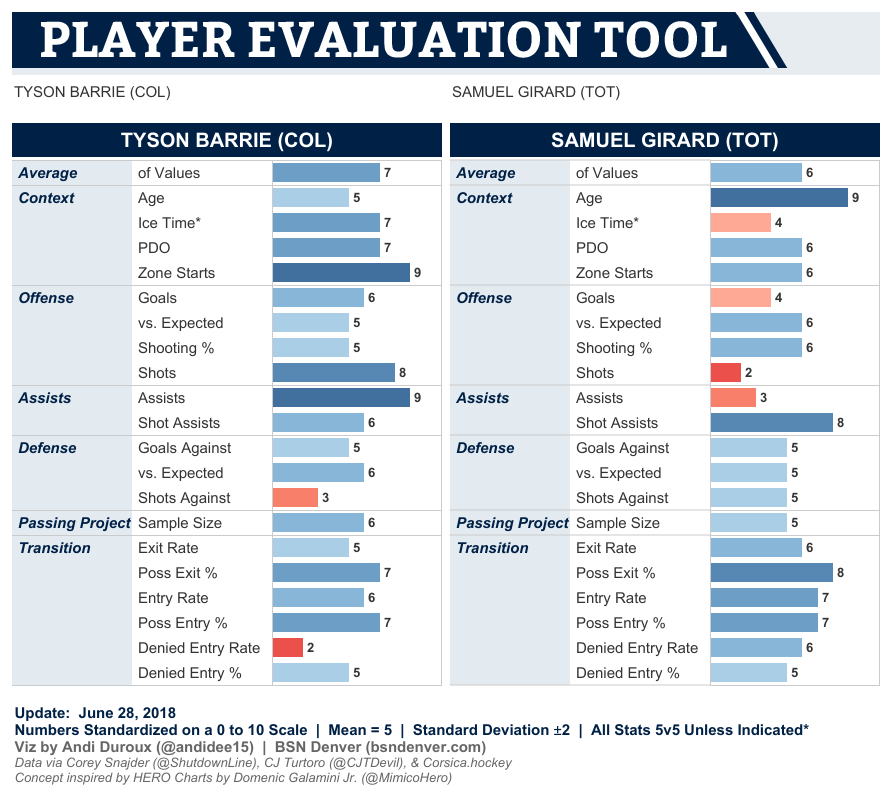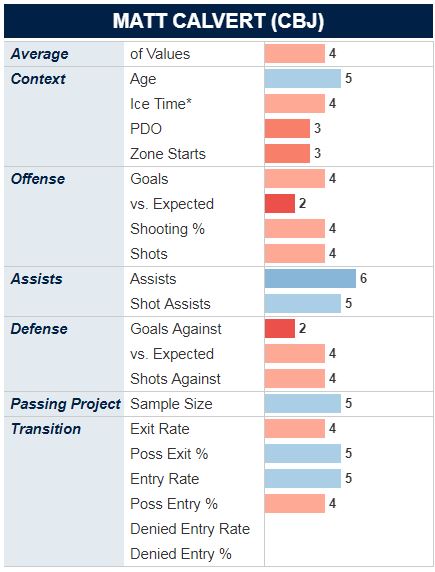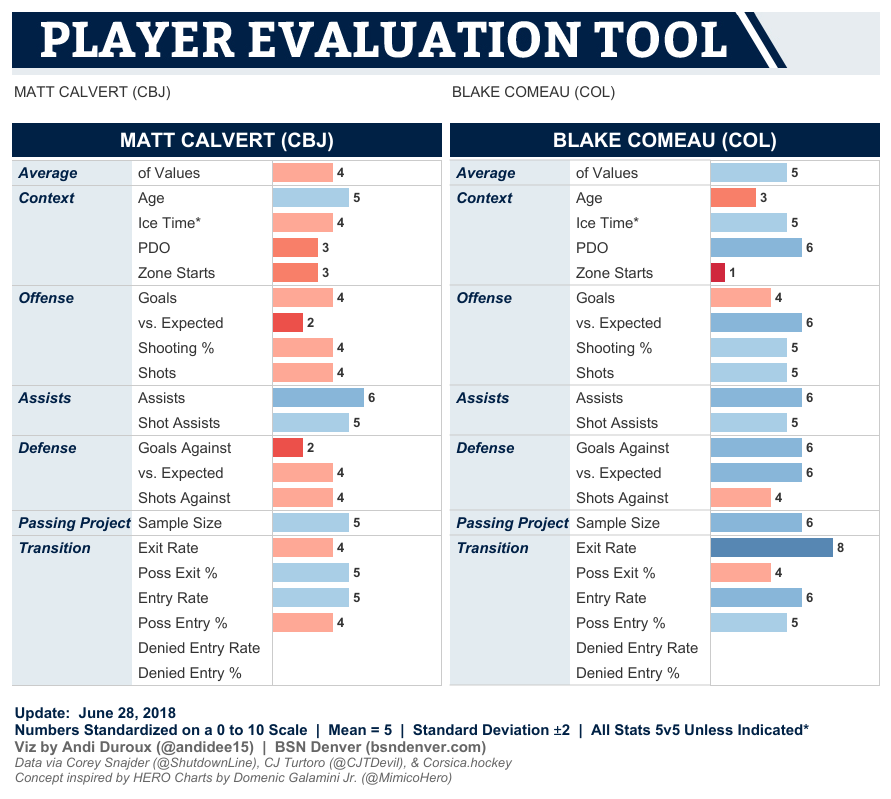© 2025 ALLCITY Network Inc.
All rights reserved.

Ah, July 1st. It’s only fitting that Canada’s Independence Day coincides with the start of NHL free agency, the one day a year where every club waves goodbye to departing players to welcome in the new. It’s a day of change, and the Avalanche celebrated accordingly this year.
Gone are the familiar faces of Jonathan Bernier, Blake Comeau, and many others. In their place, the team added defenseman Ian Cole and left wing Matt Calvert to the fold.
So, who are these new players? Where do they fit in the lineup, and what do they mean for the team moving forward?
IAN COLE
Let’s start with the defenseman of the set, Ian Cole. He was selected in the first round of the 2007 draft by St. Louis and played his first four and a half seasons with them. Midway through the 2014-15 campaign, he found himself traded to Pittsburgh, where he managed to win two Stanley Cups. This February, the 29-year-old was on the move again, first to Ottawa in the Derick Brassard deal, then flipped to Columbus three days later for a prospect and a 3rd.
So, who is he? In 47 games with Pittsburgh this year, Cole scored 3G / 10A / 13pts while averaging 15:09 at even strength and 2:27 short-handed a night. His normal defensive partners included an eclectic mix of Jamie Oleksiak, Justin Schultz, Chad Ruhwedel, and old friend Matt Hunwick. In short, he was a 3rd pairing PK player on a very good team.
After he moved to Columbus, his TOI jumped a bit at even strength, crossing the 16-minute mark to 16:23. His PK duties also continued – he and David Savard made up the first unit during the last 10 games of the season. In his 20 games with the Jackets, he also added 2 goals and 5 assists.
Looking at his career stats, 20 points is a bit of a high year. He had 26 points in Pittsburgh the year before, setting a career-high mark. His next highest total is 17. It’s very clear Cole was not brought in to put points on the board in Colorado.
However, that doesn’t mean his underlying numbers are bad. His rate of shooting and assisting on shots is right in line with an average defenseman in the league, and while he doesn’t score a ton, he does contribute despite somewhat high defensive zone starts.
What stands out to me is his Defense Shots Against numbers. That means that when he’s on the ice, other teams are putting up a lower rate of shots than they do against the average defenseman. Based on his heat map, most of those shots are coming away from the high danger areas as well. He’s also effective at clearing the zone – not always with possession, but at least he’s getting it away from his goalie.
One minor concern is his penalties. They aren’t exorbitant, but he did take 33 minors and 2 majors in 67 games this year. Averaging a minor every other game is not something you’d ideally like to see from one of your top penalty killers.
As a whole, his stats suggest he’s a very solid depth defenseman with a left-handed shot who kills penalties. He’s not going to wow you, but he’s a very reliable option for the 2nd or 3rd pairing.
How He Fits with the Avs:
Let’s just get this out of the way: is he overpaid? Yes. Three years at $4.25 is definitely on the high side for his set of skills. Using comparable stats, Matt Cane over at Hockey Graphs calculated that a fair contract would be somewhere in the 3-year, $3.1 per range for Cole.
Yet keep in mind that the expansion draft is coming right before the 3rd year of his deal. He easily checks the boxes for qualification and almost certainly will be exposed.
We’re also talking about a team that just iced David Warsofsky, Duncan Siemens, and Mark Alt through the end of the season and into the playoffs. Injuries happen, and while there is concern about Avs prospects Conor Timmins, Cale Makar, and Nicolas Meloche receiving NHL ice time, the three-year duration of Cole’s contract with the Avs (or two, if he’s selected by Seattle) should align well with when the prospects are challenging for a full-time roster spot. He’s an above replacement level stopgap for a team that still needed to shore up their depth.
The Avs also aren’t under pressure from the salary cap. As of this writing, they still have $17 million available for next season, and plenty of salary coming off the books beyond. Unless something crazy happens, the only person who should be fretting about what Cole is getting paid is the owner, Josh Kroenke.
Getting in the habit of overpaying for UFAs is a terrible idea, but as far as deals go, this is a very manageable one.
He’s also a very clear upgrade over the Avs’ other options for left D depth.
He struggles with possession exits, but so do Patrick Nemeth and Mark Barberio. Keep in mind that Nemeth is also a restricted free agent without a contract at the moment. It’s very possible that Cole will have an impact on those talks this summer as he likely just slid into the job Nemeth occupied last season.
Yet the most intriguing part of the Cole signing is who he’ll be skating with most nights. Pairings are obviously fluid throughout the year, but for a moment, consider the stats of Tyson Barrie and Samuel Girard.
Barrie in particular struggles with shots against while he’s on the ice, and Girard isn’t exactly a world beater in that area either. However, both bring strong offensive contributions and outstanding zone exits.
Essentially, they’re both weak in the areas where Cole is strong and strong in the areas where he is weak.
If you’re trying to get the most out of every defensive pairing, Cole fills a clear need in a way that Nemeth, Barberio, and even Zadorov can’t. On paper, it makes sense that he’ll be slotting into the second or third pairing next to either Barrie or Girard next season.
MATT CALVERT
The other signing made today was for left wing Matt Calvert. Originally drafted in the 5th round of the 2008 entry draft by Columbus, the 28-year-old spent the past 8 seasons skating with the Jackets. Today, he signed a 3-year, $8.4 million deal with the Avalanche, carrying a $2.8m cap hit per year.
Last year in Columbus, the winger posted 9 goals, 15 assists, and 24 points in a nice 69 games, tying his career high for the 3rd time. His 11:33 time on ice per night at even strength ranked him 11th among Jacket forwards, although his 1:32 per game shorthanded ranked 3rd.
Perhaps it is worth noting that the Jacket’s penalty kill ranked 27th in the league last season, although a good part of that is likely attributed to Bobrovsky’s .831 save percentage shorthanded. It was significantly lower than expected based on the shot quality he faced.
Overall, Calvert is a fairly typical depth forward. His usage slants to the defensive zone, although he still puts up decent assist numbers. According to Corey Sznajder of The Athletic, Calvert excels in setting up plays from behind the net, although he’s fairly lack-luster in the all other areas.
He’s also usually a bit below his team’s average in Corsi, meaning his goalie faces more shots than he and his linemates are able to generate while he’s on the ice. Last season, only 47.9% of shot attempts went his way.
Calvert’s known for his speed, but he only created 2 rush shot attempts last season. He did, however, create 10 rebound opportunities and ranked 7th on his team for individual high danger chances. A quick look at his shot heat map indicates that when it comes to offense, he prefers the front of the net despite his 5′-11″ stature.
How He Fits with the Avs:
Perhaps the best way to understand Calvert is a comparison to who he is likely replacing. Blake Comeau, who spent last year playing on Carl Soderberg‘s line in a shutdown role, has moved on to different pastures after inking a three-year deal in Dallas today. This frees up a third line roster spot that Calvert logically slips into.
Although Comeau had an above average year, Calvert appears to be a downgrade in every category but age. Comeau is four years older and much more likely to see his play drastically slip due to age over the course of these deals, but this appears to be a lateral move at best.
However, it’s not a given that it’s Comeau’s spot he’ll be taking over. Comeau is a right wing; Calvert shoots left. As of this writing, Matt Nieto – the other linemate on the Soderberg line – remains an unsigned RFA. He elected to go to arbitration with the Avalanche last summer, signing a one-year deal, $1 million contract shortly before his hearing. He posted 26 points – including 15 goals – despite heavy defensive usage this season, but the Avalanche have a rocky track record with players who chose to use their arbitration rights.
The Avs did qualify Nieto, so he’ll be back next season (assuming he’s not traded). It is possible the Calvert signing will have an effect on the talks though. They are very similar players, despite an unusually lucky year for Nieto.
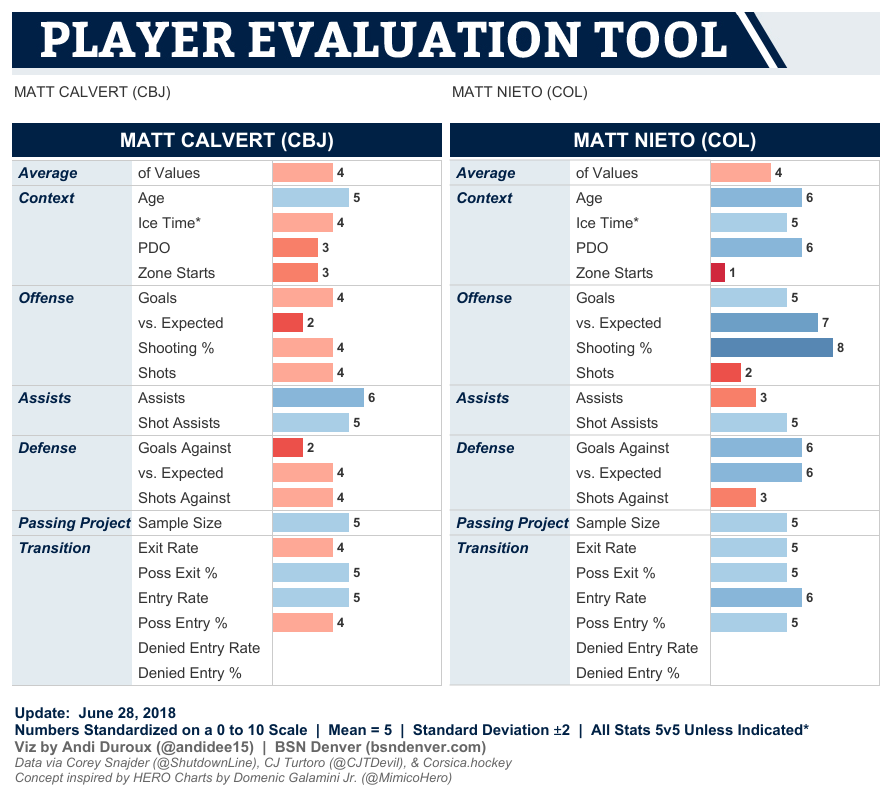
The fit on the roster is certainly there…. to an extent. Calvert hasn’t thrived in this usage. He’s gotten by and won’t actively hurt the team, but he’s not some shot suppressing, zone exiting, defensive stalwart by any means. He’s a slightly below average player whose best comparable on the current team is a waiver-wire pickup. And at age 28, there may be some high and low years, but his days of steady growth as a player are behind him.
Matt Cane predicted that Calvert should sign for 2 years at $1.5 per. Not only did the Avs almost double that cap hit, they added an extra year. Perhaps he’ll someone that will thrive outside of John Tortorella’s system in Columbus, but his numbers from last season are very lackluster, to say the least.
Committing three years to a player of his caliber is a highly questionable move. It won’t strangle the Avs by any means, and he is eligible for exposure in the expansion draft. In the short term, it does protect some of the young players by bringing in a player who is perceived as a solid defensive asset, but over the life of his contract, he should be passed repeatedly by Avalanche prospects earning roster spots.
Of the two moves, on paper, Cole makes sense while Calvert doesn’t. However, today is a day of change – new systems, new teammates, new situations. The past helps us guess what might happen in the future, but no one really knows. With any luck, Cole and Calvert will both prove to be important depth pieces for the Avalanche both this year and for seasons to come.
Comments
Share your thoughts
Join the conversation



